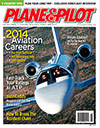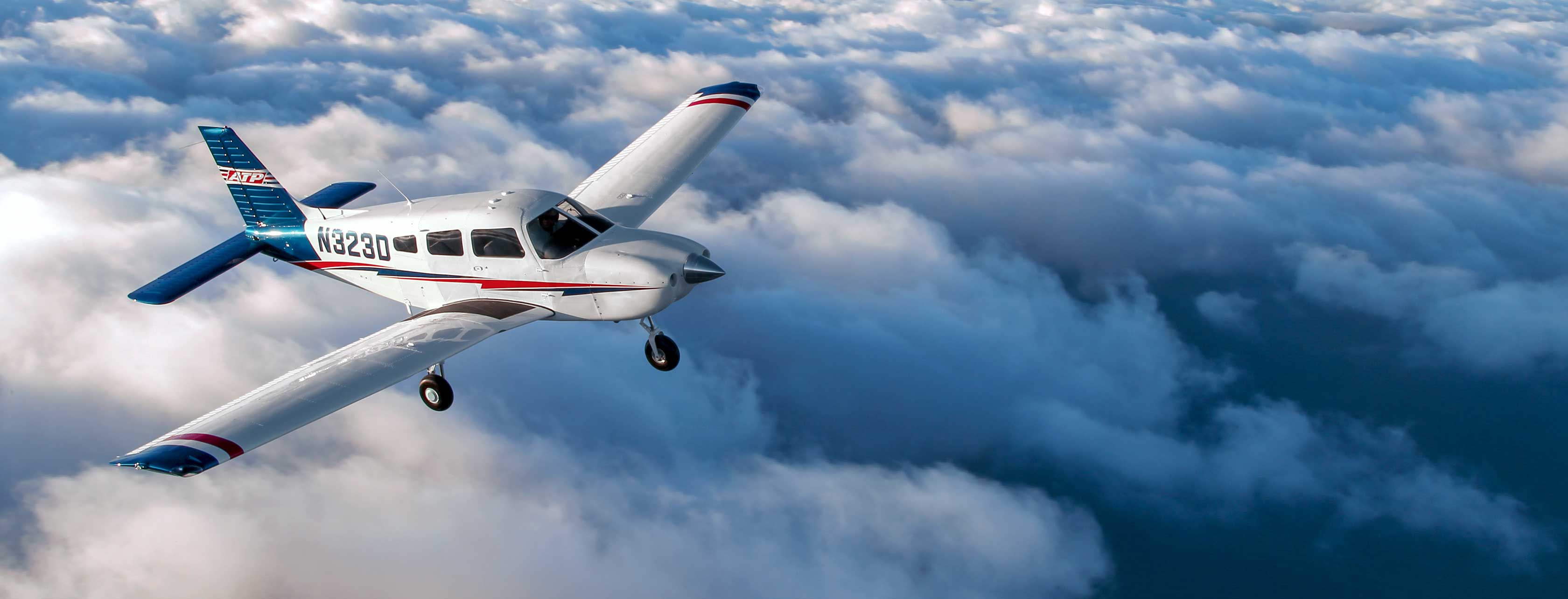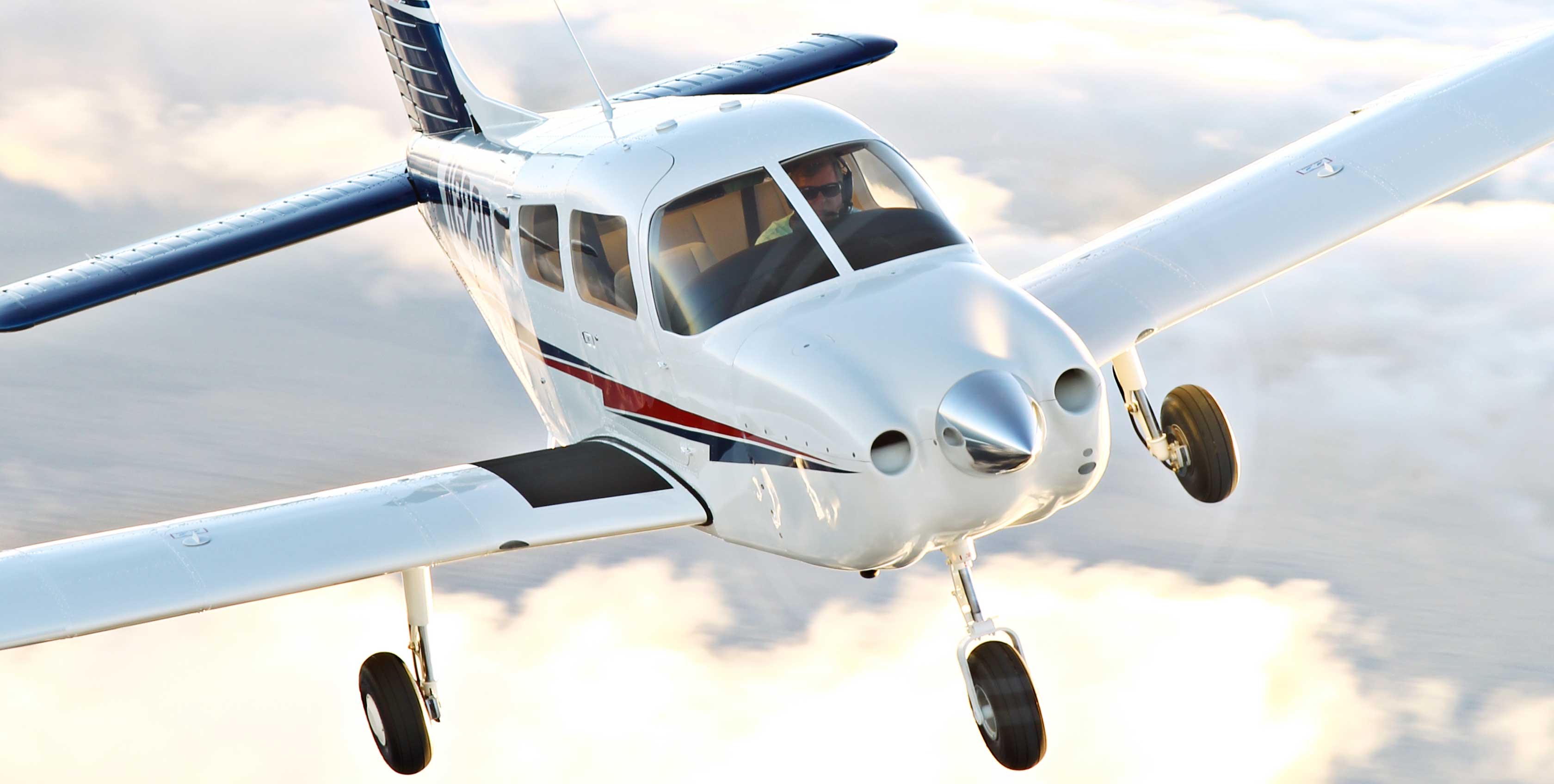Training With Seminoles
ATP Flight School employs the world’s largest fleet of Piper Seminoles to train aspiring airline pilots for the multi-engine rating.
Piper has always been famous for producing light twins. Today, the Vero Beach company builds perhaps the most popular true twin trainer on the planet, the Piper PA-44-180 Seminole. It's not the only light twin on the market, but it may be the only one to synthesize the ingredients necessary to produce an ideal twin trainer.
In a sense, the Seminole is the end product of 60 years of evolution. Piper began building mini-multis in the mid-1950s with the bulbous, 150-160 hp Apache, a modest twin that in many respects signaled the beginning of the modern era of flight training.
Piper's second twin trainer was the popular Twin Comanche, an airplane that delivered improved esthetics and significantly better performance for the same horsepower. This made the Twin Com a popular choice for both multi-engine flight training and business/family transport.
The company's third light twin was the 1972 Seneca 1, a variation on the company's popular Cherokee Six with a pair of normally aspirated 200 hp engines on the wings, a cargo door at aft left and six seats. While some folks felt the Seneca 1 was too much airplane for the mission, it met with limited success as a trainer. (Forty-two years later, the dramatically improved turbocharged Seneca V is still in Piper's model lineup, though it has become a sophisticated business and family transport rather than a dedicated teaching tool.)
Piper scored perhaps its best, on-target training twin success with the T-tailed Seminole that premiered in 1979. Piper has always been a master at adapting existing designs to new configurations, and the Seminole was perhaps the perfect example of that philosophy.
The Seminole was purpose-built for the training market, basically an Arrow IV fuselage, landing gear and semi-tapered wing with counter-rotating props, a T-tail mounted high above the propwash and a pair of economical, carbureted, 180 hp Lycoming O-360 engines, the latter among the most durable power plants in the industry.
No one is sure which "modern" light twin came first, but the explosion of general aviation sales in the late '70s spawned at least three light/light-training twins, all of which premiered at roughly the same time: the aforementioned Piper Seminole, Beech's Duchess and the Grumman-American Cougar.
The Seminole and Duchess were practically carbon copies of each other, using the same model engines and the same basic airframe/wing/tail configuration, while the Cougar was a very different design that featured a pair of 160 hp Lycoming 0-320s (ala Twin Comanche).
The Cougar lasted only two years and was discontinued when Grumman opted out of the general aviation business altogether in 1981. Beechcraft's Duchess was dropped from the company's roster in 1982.
This left the Seminole as the only light/light twin of the original three, and despite some production starts and stops in the last three decades, the PA-44 is the only one still in production. The airplane has evolved to dominate multi-engine training, at least in the USA.
Recently, the Piper product was joined by the diesel-powered Diamond Twin Star. Diamond Aircraft of Wiener Neustadt, Austria, introduced the DA42 in 2005. Inevitably, a European design with turbo diesel power demands a higher price, and that has often placed the DA42 out of reach of some flight schools.
The Seminole continues its reign as perhaps the favorite twin trainer on this side of the Atlantic. It offers its own level of add-on sophistication, with Garmin, flat panel avionics and several available options to allow configuring as-you-like-it.
Piper isn't without experience selling airplanes overseas. They've enjoyed strong fleet sales from Jordan to the U.K., France to South Africa. Service is available in most major countries, and the Seminole is a known commodity on a global scale. So far, there have been nearly 800 Seminoles produced, and they're serviced at a large network of Piper dealers around the world.
Flying The Seminole
Like the single-engine Arrow, the Seminole is a simple machine, easy to maintain and fly, and a nearly ideal twin trainer. In an attempt to tame the asymmetrical thrust problem during an engine failure, Lycoming builds the right engine as a mirror image of the left, so the right prop rotates to the left, whereas the left prop turns right, providing balanced thrust and virtually eliminating the critical engine problem of conventional, asymmetric thrust twins. (Counter-rotating props isn't a new idea. In fact, it was used in 1903 by a couple of bicycle manufacturers from Ohio on a very early airplane.)
Additionally, the Seminole's minimum, single-engine control speed (Vmc) is a low 56 knots. That's almost the same as dirty stall (55 knots), and it means the airplane effectively manifests very little Vmc problem with one engine inoperative. Single-engine performance isn't exactly stellar (single-engine service ceiling is only 3,800 feet), so it might not be too bright to actually feather one engine and practice unimotor procedures over Albuquerque, Denver or Cheyenne.
One indirect benefit for training is the airplane's disproportionately large 108-gallon fuel tanks, cleverly mounted inside the aft nacelles of each engine. When I did the first pilot report on the Seminole back in 1978, I asked Piper what the FAA thought of mounting a 54-gallon fuel tank within inches of a hot engine. One of the engineers who participated in the certification program told me Piper had to prove that the barrier between engine and fuel was a true fire WALL before the feds were convinced the engines' aft bulkheads truly were protected.
At 75% power, the Seminole translates 108 gallons of fuel to a generous four hours endurance plus reserve. Multi-engine flight training rarely demands continuous 75% operation, however, and a four-hour flight lesson would indeed be unusual. A more conservative 55% setting for instructional purposes extends endurance to five hours. If you do need to hustle across country, the Seminole will score 155 knots at max cruise.
Training At ATP
The Seminole lends itself well to institutional flight training for high volume flight schools. A student takes the left front seat, and an instructor oversees operations from the right front.
One of the largest schools in the business of turning out future airline pilots is ATP Flight School. The initials stand for Airline Transport Professionals, and the school was organized in 1984 by a group of airline pilots focused on efficient military-to-civilian Airline Transport Pilot certification programs. ATP teaches both domestic and international candidates, some in advanced ratings and others from ab-initio status to nearly full airline credentials.
The school's trainers include everything from Archers and Skyhawks for entry-level instruction to a Meridian and Citation jet for pilots transitioning to turbine equipment. In total, ATP has some 225 airplanes strategically located across the USA. Major ATP training facilities are located in Phoenix, Dallas, Atlanta and Jacksonville, with outlying schools in locations such as Chicago, Denver, Seattle, San Diego, Las Vegas and two dozen other sites.
Most significantly, ATP's trainers include over 100 Piper Seminoles, the world's largest fleet of multi-engine teaching machines. Half those aircraft are post-2000 models, and all are fitted with a full panel of Garmin IFR avionics, many with the Garmin G500 flat-panel display.
ATP's inventory of trainers also includes a selection of simulators that allows students to train for instrument flight without the expense and inconvenience of operating an airplane. The top simulators include Bombardier RJ panels.
ATP Marketing Director Michael Arnold says the Piper PA-44-180 works well in training mode. "We can transition students from walk-in-off-the-street beginners to a knowledgeable regional jet pilot, well qualified to apply for a regional airline job.
"In many respects, the Seminole is almost ideally suited to the needs of multi-engine training," Arnold continues. "We have more experience in the Seminole than any other flight school, and we've come to regard the PA-44 as the best possible tool for teaching multi-engine flying at intermediate and advanced levels."
ATP's success isn't surprising considering the rewards of airline flying. The U.S. Bureau of Labor Statistics estimates the average airline pilot makes about $92,000 a year, though starting pay is much lower. If a pilot stays with the industry for 20-25 years, they can earn an annual salary of as much as $150,000, have as much as 15-17 days off each month and fly about 900 hours a year.
Fortunately for those with the talent and wherewithal to ascend the ladder to the ultimate left seat, the opportunities are impressive. The University of North Dakota, one of the colleges most active in training pilots, estimates the industry will need 69,000 new pilots by 2035.
When a student completes ATP's airline pilot course, he or she will have 100 hours in the Seminole and a total of about 275 hours in his logbook along with commercial, multi, instrument and CFI ratings. That total also includes 50 hours of simulator time. The full airline career pilot program mentioned above requires only 180 days and costs $64,995. Additionally, ATP can prepare pilots for jobs overseas, educating them to the differences in flying outside the U.S. Training for individual ratings is also available.
With such a huge fleet in so many locations, the flight school issues some 4,300 licenses and ratings a year. ATP also has a course to prepare pilots for the ATP written test.
ATP is in the process of incorporating Piper Archers into its training fleet to make the transition from single to twin even more transparent with an all-Piper fleet. The Archer has always been a manifesto of moderation, and that makes it a good introduction to the Piper Seminole.
ATP Flight School has an agreement with Republic Airways in which students interview with Republic during the instrument phase of training and receive conditional offers of employment. Students will need to build time to 1,500 hours and pass the FAA's Airline Transport Pilot checkride, but after that, they have a firm first officer job offer.
Depending upon whom you ask, flying for the airlines can be one of the best jobs in the sky. With the benefit of professional training by a school such as ATP, a new pilot is well prepared to take on the challenges of scheduled airline flying, both in the U.S. and overseas.



